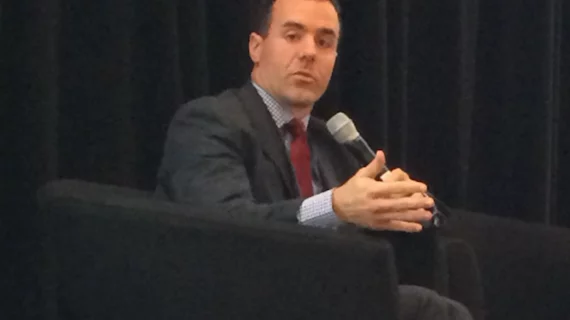“Creating the Image Enabled Enterprise” was the theme of the 2015 Society for Imaging Informatics in Medicine (SIIM) annual meeting. Because this ambitious endeavor entails providing EMR access to DICOM and non-DICOM images from every hospital department and satellite site in the healthcare enterprise, it was subject of a town hall meeting on the first day of the conference.
Opening session presenter Donald K. Dennison moderated the event and was joined by two panelists on different paths toward the enterprise image solution: Christopher Roth, MD, CIIP, vice chair, informatics, Duke University Health System, and Jonathan Shoemaker, RT, CIIP, applications director, enterprise medical image management, Sutter Health.
Roth reported that Duke began with a vendor neutral archive (VNA) in 2011 to initially hold the radiology department’s DICOM images, moved onto an EMR implementation, and is now reaching out to clinics, physician offices and other departments in the enterprise that are capturing images and not storing them—both non-DICOM and DICOM images. The Duke solution includes two separate viewers: a radiology viewer and an enterprise viewer.
Shoemaker said that Sutter began by consolidating all Sutter hospitals on one PACS, acquired a VNA to accommodate the images from all of the radiology departments and then implemented a single enterprise viewer for all users. The next step will be loading DICOM images from other “ologies.”
At the moment, going after systems outside of radiology is not in scope but is in the overall stragety. “The further away from the sun you get, the colder it gets,” said Shoemaker, referring to, for instance systems don’t all use DICOM objects nor follow standard workflows and dataflows seen in radiology/cardiology.
10 considerations when consolidating images and data into a central VNA or enterprise imaging system
The following 10 tips were culled from the discussion for those who intend to participate in gathering DICOM, non-DICOM or both types of images into an enterprise imaging management solution.
1. Build your case. To get buy-in for an enterprise image strategy, talk to your big referrers and explain to your clinical colleagues that there are images all over the organization, but there is no way to access them. "Once you create a why, everything else is easy," Roth said.
2. Show them the money. Sell your strategy to the c-suite using a revenue savings model, developing a use case around storage savings and tying it all to the EMR. Roth parsed out the (image generating) users, allocated the percentage each department should pay and linked it back to the EMR.
"That's what people do to gain revenue in an enterprise," Roth said, referring to the 800-lb. gorilla in the room—the EMR. "Use it and leverage it like crazy. For us, it was consolidate everything, and parse out the users.”
3. Sync the project with hospital mission. In a population health world, there will be more and different competition for dollars: Should we spend on EMR, imaging or buying more primary care physicians. The VNA can become a key foundation piece for pulling more physicians into the organization, Roth said.
4. Governance is the linchpin. It is Roth’s contention that data governance is more important than whatever technology you use. "The technology will fall into place, but governance is really where the work needs to be done," he said.
5. Consider workflow with non-DICOM images. DICOM headers contain a lot of the key metadata associated with an image created by a radiological modality, so it is necessary to determine how things like laterality will be handled when including non-DICOM images. "A lot of these problems could be solved when an image is uploaded," Dennison suggested.
6. Raise your game. A skilled PACS administrator is required to manage an enterprise image initiative. For starters, the PACS administrator needs to have a deep understanding of the standards, including the very complex DICOM standard.
"You have to become the vendor," Shoemaker said. "PACS administrators need to be very skilled in core imaging and informatics knowledge in Image standards."
7. Leverage fear. In order to get radiology moving toward an enterprise image strategy, don’t be afraid to leverage anxiety with your radiologists, so that they are familiar with enterprise imaging capture and workflow. Roth's message was a familiar one these days: If you aren't at the table you are on the table.
8. Press your advantage. If a big tent approach is taken to the project and all of the important stakeholders are included in the initiative, then radiology has an excellent opportunity to manage the project. “As long as there is a governance process and the right people are involved, then IT is going to let the customers make the decisions," Roth said.
9. Emphasize the benefits. Change is difficult, and building an enterprise image strategy represents a sea change for imaging informatics personnel. To help people through what will be a tremendous culture change, emphasize the benefits, Roth recommended.
10. Look at the ability of your vendors to scale. Once you invite your colleagues to contribute their images, you may be surprised at the growth of your archive. Also, there is no way to predict how many hospitals and satellite sites the enterprise will accumulate.

